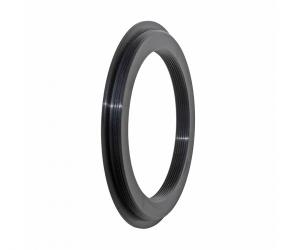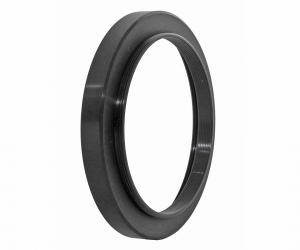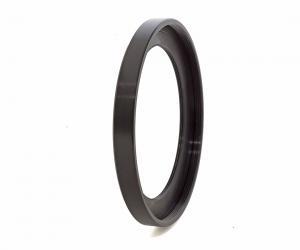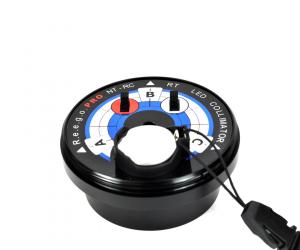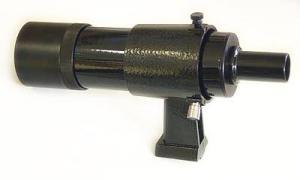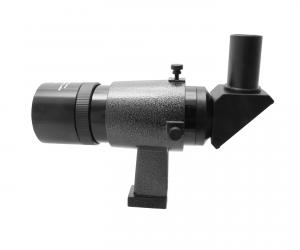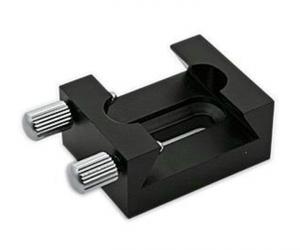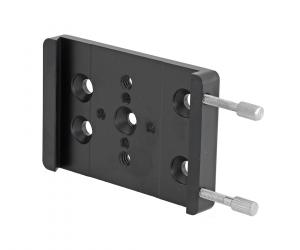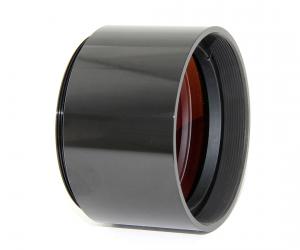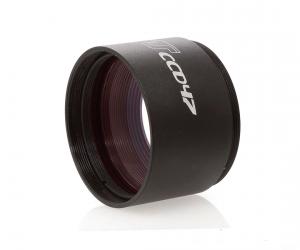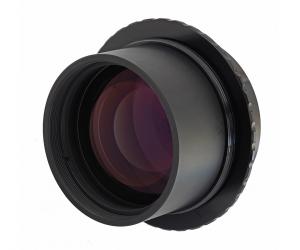- Telescopes
- Overview:
Telescopes - Achromatic Refractor
- Apochromatic Refractor
- Overview:
Apochromatic Refractor - ED Refractor - less color aberration than an achromatic
- SD APO - color free 2-element APO objective
- EDT APO - 3 element ED objective
- High End APO with 3-element APO objective - no color aberation
- Flatfield APO with flat field for Astrophotography
- All Apos and EDs from all manufacturers - large overview
- TS APO and ED from Japan with high quality optics
- Overview:
- Newtonian Telescopes
- Dobsonian Telescopes
- RC Ritchey Chretien Telescopes
- Casssegrain Telescopes
- Reflektor Telescopce with Lens Correcture
- Maksutov Cassegrain Telescopes
- GoTo Telescopes
- Solar Telescopes H-Alpha
- Overview:
- Mounts Tripods Rings Rails Power Supply ...
- Overview:
Mounts Tripods Rings Rails Power Supply ... - Mounts Equatorial with GoTo
- Mounts Equatorial without GoTo
- Mounts Azimutal with GoTo
- Mounts Azimutal without GoTo
- Mounts GoTo - Harmonic Drive
- Travel mounts for astro imaging
- Tripods Piers Polar Wedges
- Mount Control & Electronics
- Dovetail Clamps, Plates and Mount Adapters
- Tube Rings
- Power Supply
- Counterweights Balance Weights
- Mount Accessories - Other
- Overview:
- Telescope Accessories
- Overview:
Telescope Accessories - Eyepieces
- Barlows & Reducer Lenses
- Diagonal Mirrors and Prisms
- Binocular Viewers
- Finder Scopes
- Telescope Collimation and Test
- Cleaning Tools
- Transport and Storage
- Dust protection for Telescopes & Accessories
- Stray Light Protection
- Dewcaps and Heater
- Focusers, Adapters, Motorfocus
- Telescope DIY & Improvement
- Other telescope accessories
- Replacement Parts
- Overview:
- Filters
- Overview:
Filters - Color Filters and Color Filtersets
- Nebular Filters for Visual Observing
- Neutral-Density and Polfilter
- Photo Narrowband Nebular Filters
- Photo Broadband Filters
- Photo Planetary Filters
- Photo R-G-B and IR Cut Filters
- Photo - Filtersets
- Photometric Filters
- Clip Filter for DSLR Cameras
- Filter Wheels and Filterslider
- Solar Filters for white light
- Solarfilter for H-Alpha and Calcium
- Overview:
- Adaptors
- Overview:
Adaptors - Adapter 1,25" and 24,5mm
- Adapter 2"
- Adapter T2 - M42x0.75
- Adapter M48x0,75
- Adapter M54
- Adapter SC
- Adapter M63
- Adapter M68
- Adapter to other Threads
- Adapter Extensions
- Adapter camera bayonet
- Adapter Objective Filterthread
- Adapter Quick Changing , Rotation
- Adapter Eyepiece Projection
- Adapters Tilting
- Overview:
- Astrophotography and Photography
- Overview:
Astrophotography and Photography - Cooled Cameras
- Cameras without Cooling
- Deep-Sky Cameras uncooled
- Set-Offers Camera, Filter, Wheels
- Acessories for Cameras
- Travel mounts for astro imaging
- Imaging Correctors for Telescopes
- Autoguiding Cameras & Sets
- Everything for Guiding
- Focusing aids - Bahtinov mascs
- Flat Field foils and boxes
- Lenses for Cameras
- Piggyback Camera Holder
- Camera Bags, Photocases & more
- Digital Camera and Smartphone Adapter
- Other photo accessories
- Overview:
- Binoculars, Spotting Scopes, Microscopes, Range Finders
- Overview:
Binoculars, Spotting Scopes, Microscopes, Range Finders - Spotting Scopes and Acessories
- Roof Prism Binoculars
- Binoculars with Porro prisms
- Binoculars from 100mm Aperture
- Binoculars with 1,25 inch eyepieces
- TSMX APO Binoculars
- Binoculars for Astronomy
- Binoculars Hiking Bird watching
- Monoculars - Opera Binoculars
- Accessories for Binoculars
- Range Finders
- Microscopy
- Bags for Phototripods & Binoculars
- Overview:
- Phototripods and Binomounts
- Books, Software
- Overview:
Books, Software - Books for Astronomy Beginners
- Star Charts and Planispheres
- Books about our Solar System
- Observing Tips for Amateurs
- Popular Astronomy Literature
- Teaching material
- Astrophotography books
- Telescopes, Observatories, Construction
- Calendars Yearbooks
- Software, Star Charts
- Books for Microscopers
- Books Nature and Animals
- Nature Photography TimeLapse
- Overview:
- Night Vision, Magnifiers, Weather, Domes & more
- Beginner Astronomy and Gift Ideas
- Second Hand & Special Offers
- New products
Manufacturer: -TS Teleskope
Product number: GSRC20Truss
EUR14990.00new
EUR 14.990,00
incl. 19 % VAT (DE)
The VAT indicated refers to that applicable in Germany. After logging in, the VAT amount is adjusted to the applicable VAT of the stored delivery country. Therefore, the final price may vary accordingly.
excl. 65.45 € shipping costs (DE)
more details to the shipping costs ...Please log in to calculate shipping costs to your country.
Product expected to be available from 15.02.2026
There are no reviews for this product
- Details..
- Technical data..
- In the box..
- Download..
- Manufacturer infos..
- Safety informations..
TS 500mm f/8 Ritchey-Chrétien Telescope Gen. II
The large RC is designed for photographic and visual use in observatories. The RC illuminates about 70 mm of field very well. Without a corrector, you have a good, flat field with a diameter of about 35 mm. You have a pure reflection system, so you can also use the infrared light. For larger sensors or full-frame sensors with high resolution, however, we recommend a suitable corrector to improve the star image towards the edge.Lightweight design - modern honeycomb mirror:
The new generation stands for a reduced dead weight, but above all for better collimation stability. The primary mirror is no longer solid, but is significantly lighter thanks to the honeycomb design, as in professional observatories. This saves weight and also improves the stability of the collimation. The mirror is fixed laterally by 10 support points and supported on the flat underside by 18 computer-optimized support points. This means that the collimation does not change even with larger panning movements. In addition, the glare shield on the primary mirror is also made of carbon to further reduce weight.
General advantages of TS-Optics RC telescopes at a glance:
Astrophotography with the RC telescope:
Sensors up to APS-C format can be used without a corrector. The RC is a pure mirror system and can therefore also be used for infrared photography, provided the camera is sensitive to infrared light. If you want to use larger sensors or improve the focal ratio of f/8, we recommend additional correctors. We particularly recommend:
Astrophotographic results achieved with this telescope on Astrobin:
The RC telescopes are very well suited for astrophotography. Here are some astrophotographs taken with this telescope model: Link to Astrobin
The improved focuser - Gen 2:
The focuser has been significantly improved and offers greater accuracy and significantly improved rigidity. The focuser focuses without any problems even under high weight loads.
Video with information about RC telescopes:
On our YouTube account you will find a video about the characteristics of the Ritchey-Chrétien telescopes in general and the features of the GSO RCs in particular, as well as suggestions for accessories:
Adjusting the RC telescope:
We recommend using the TSRCKOLLI or an adjustment telescope to adjust the telescope. These aids are linked in the "Adjustment and cleaning" section.
Instruction video:
Teleskop-Service has made an instruction video on the subject of RC collimation:
| Optical Design: | True RC with a hyperbolic primary and secondary mirror. |
| Aperture: | 500 mm |
| Focal Length: | 4000 mm |
| Focal Ratio: | f/8 |
| Mirror material: | low thermal expansion quartz glass primary and secondary mirrors |
| Reflectivity: | 94% enhanced reflectivity |
| Connection at focuser: | 2", 1.25" and M69x1 thread (female) |
| Back Focus: | 233 mm from the M117 thread on the tube backside - 127 mm from 2" connection of the focuser |
| Tube: | Carbon Truss Tube with 2x dovetails - Losmandy style |
| Weight: | 55 kg |
| Tube length: | 1360 mm without focuser |
| Max. tube diameter (back): | 630 mm |
| Center of gravity: | approx. 300 mm from the back of the tube |
| Manufacturer / Importeur: | Teleskop-Service Ransburg GmbH |
| Street: | Von-Myra-Str. 8 |
| ZIP / City: | 85599 Parsdorf |
| Country: | germany |
| Telefon number: | +49 89 99228750 |
| Email: | info@teleskop-service.de |
| Website: | www.teleskop-express.de |
Safety informations: PDF Download
Recommended accessories
Adaptors
Cleaning & Collimating
Finder & Accessories
TS-Optics 8x50 Finder - straight view, black colour and with adjustable bracket
EUR 69,00RRP EUR 89,00you save 22.5% (EUR 20,00)
TS-Optics 8x50 Finder - with Bracket - black colour - 90° angled
EUR 98,00RRP EUR 109,00you save 10.1% (EUR 11,00)
TS-Optics FDA Accessory Clamp for Losmandy Style Dovetail Bars
EUR 29,90RRP EUR 33,00you save 9.4% (EUR 3,10)
Mounts
Photo Acessories
Reviews


















